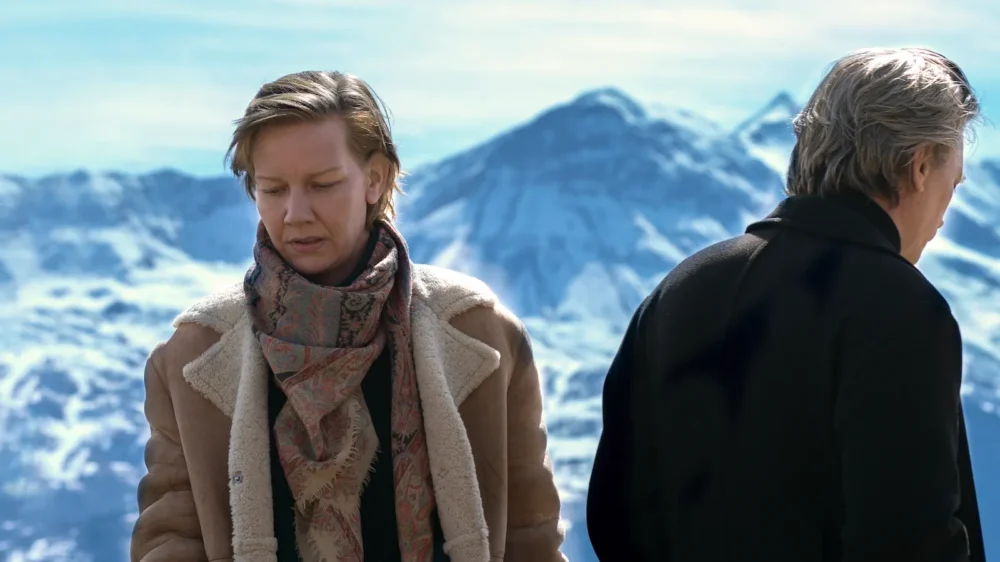Anatomy of a Fall Ending: Unpacking the Conclusion

The film “Anatomy of a Fall” is a gripping drama that leaves viewers with many questions, especially regarding its ending. Directed by Justine Triet, this film dives deep into the complexities of relationships and the legal system. It tells the story of a woman, Sandra, who is accused of her husband’s murder. The movie mixes elements of suspense, emotional turmoil, and legal drama to create a thought-provoking narrative. The ending, in particular, has sparked much discussion and interpretation among audiences.
In this article, we will explore the ending of “Anatomy of a Fall” in detail. We will analyze what happens in the conclusion and how it ties into the film’s themes. Understanding the ending requires looking at the film’s characters, their motivations, and the legal complexities presented throughout the story. By examining these elements, we can gain a better understanding of the film’s powerful message.
The film portrays Sandra’s struggle as she navigates the aftermath of her husband’s mysterious death. As the story unfolds, we see flashbacks that provide insight into their tumultuous marriage. This narrative structure is essential in creating a sense of ambiguity and uncertainty surrounding the events leading up to the tragedy. The audience is left wondering: was it an accident, or did Sandra play a role in her husband’s death?
Throughout the film, we also see the impact of the legal system on Sandra’s life. The courtroom scenes reveal the challenges she faces as her character is put on trial not just for murder but also for her identity as a wife and mother. The scrutiny she endures from the public and the media adds another layer of complexity to her situation. This societal pressure influences how the audience perceives her character and her actions.
As we approach the ending, the tension builds, and the film raises critical questions about truth and justice. Viewers are prompted to consider whether they truly know the characters and their motivations. The ending serves as a culmination of the film’s themes, forcing us to confront the messy nature of relationships and the subjective nature of truth.
In summary, “Anatomy of a Fall” is more than just a murder mystery; it is a study of human relationships and the complexities of truth. The film’s ending invites viewers to reflect on what they believe happened and the moral implications of the characters’ actions. In the following sections, we will delve deeper into the ending and explore its significance in the overall narrative.
The Events Leading Up to the Ending

1. The Build-Up of Tension
The film begins with a seemingly idyllic family life. Sandra, her husband, and their son appear to be a happy family. However, as the story progresses, we learn that their marriage is far from perfect. Tension builds as we see the couple’s struggles, including communication breakdowns and personal conflicts. These elements set the stage for the dramatic events that follow.
- Flashbacks Reveal Truth: Flashbacks throughout the film provide insight into the couple’s troubled relationship. Viewers witness moments of love but also significant arguments. This duality complicates our understanding of their marriage.
- Emotional Struggles: Both characters face personal challenges that strain their relationship. These struggles add depth to their characters and help us understand their motivations.
- The Night of the Incident: The pivotal moment occurs when Sandra’s husband dies under mysterious circumstances. The film expertly creates an atmosphere of uncertainty, leading viewers to question what truly happened that night.
2. The Investigation Begins
After the husband’s death, the police launch an investigation. Sandra quickly becomes the prime suspect. This shift from a loving wife to a potential murderer is shocking and central to the film’s narrative.
- Public Perception: The media frenzy surrounding the case adds to the pressure Sandra faces. Public opinion quickly turns against her, painting her as a villain without knowing the full story.
- Legal Struggles: Sandra hires a lawyer to defend her in court. The legal battles highlight the complexities of the justice system and how it can be influenced by public sentiment.
- Character Testimonies: Throughout the trial, witnesses provide conflicting testimonies. This creates confusion for both Sandra and the audience, emphasizing the film’s theme of subjective truth.
3. The Courtroom Drama
The courtroom scenes are some of the most intense in the film. They showcase the struggle between truth and perception. Sandra’s fate hangs in the balance as the prosecution builds its case against her.
- Emotional Testimony: Sandra’s emotional testimony is a powerful moment. She opens up about her relationship with her husband, revealing both love and pain. This vulnerability invites sympathy from the audience.
- Defense Arguments: Sandra’s defense team works hard to dismantle the prosecution’s narrative. They highlight the lack of concrete evidence against her and argue that her husband’s death was an accident.
- Audience’s Role: As viewers, we are drawn into the courtroom drama. We find ourselves questioning what we believe and who we sympathize with, making the experience more immersive.
The Climax and Conclusion

4. The Climactic Moment
As the trial reaches its climax, tensions run high. Sandra’s fate seems uncertain as the jury deliberates. The film masterfully builds suspense, leaving the audience on the edge of their seats.
- Key Evidence: A critical piece of evidence emerges during the trial. This moment shifts the narrative and adds complexity to the case. The audience is left wondering how this revelation will impact the outcome.
- Final Testimonies: The final testimonies from both sides are crucial. They encapsulate the film’s central themes and allow the audience to reflect on the nature of truth and justice.
- Emotional Resolution: The emotional weight of the film culminates in this moment. The audience feels the tension, and the characters’ struggles become palpable.
5. The Ending Explained
The film’s ending is both powerful and ambiguous. Without revealing too much, we can say that the resolution leaves viewers contemplating what truly happened. The final scenes are open to interpretation, allowing for various readings of the characters’ motivations and actions.
- Unanswered Questions: The ending raises questions about morality and responsibility. It challenges the audience to consider the gray areas of human relationships and the complexity of truth.
- Symbolism and Imagery: The film uses symbolism to convey deeper meanings in its ending. The final shots are visually striking, reinforcing the emotional impact of the story.
- Thematic Reflections: As the credits roll, viewers are left to reflect on the themes of love, betrayal, and the search for truth. The film’s ending resonates long after watching, inviting discussions about its meaning.
6. Final Thoughts on the Film’s Message
Ultimately, “Anatomy of a Fall” is a profound exploration of human relationships and the quest for truth. The ending serves as a reminder that life is often not black and white. Instead, it presents a tapestry of emotions, motivations, and moral dilemmas.
- Complex Characters: The film’s characters are multi-dimensional, making it difficult to label anyone as purely good or bad. This complexity invites viewers to empathize with their struggles.
- Invitation to Reflect: The ending encourages audiences to reflect on their own beliefs about justice and truth. It challenges viewers to consider how their perspectives shape their understanding of others.
- Impact on the Audience: The emotional and psychological impact of the film lingers long after the viewing experience. It sparks conversations about love, loss, and the nature of truth in our lives.
Conclusion
In conclusion, the ending of “Anatomy of a Fall” is a powerful culmination of the film’s themes and character arcs. Through its complex narrative and emotional depth, the film challenges viewers to grapple with the messy realities of human relationships. The unanswered questions and ambiguous resolution leave audiences contemplating their beliefs about truth and justice.
This exploration of the ending highlights the importance of understanding character motivations and the societal influences that shape perceptions. “Anatomy of a Fall” invites us to look beyond the surface and consider the intricate dynamics at play in our lives.
Ultimately, the film serves as a reminder that life is rarely straightforward. The ending encourages us to embrace the complexities of our experiences and the relationships we hold dear. By doing so, we can navigate the intricacies of truth and understanding in our own lives.
FAQs
Q: What is the main plot of “Anatomy of a Fall”?
A: The film follows Sandra, who is accused of murdering her husband, and explores her legal struggles and complex relationships.
Q: How does the film depict the legal system?
A: The film portrays the legal system as complicated and influenced by public perception, highlighting the challenges Sandra faces.
Q: What themes are explored in the ending?
A: The ending explores themes of truth, morality, and the complexities of human relationships, leaving viewers with many questions.
Q: Are the characters in the film fully good or bad?
A: The characters are multi-dimensional, making it difficult to label them purely as good or bad, which adds depth to the story.Q: Why is the ending open to interpretation?
A: The ending leaves unanswered questions, allowing viewers to reflect on their beliefs about justice and truth based on their perspectives.



